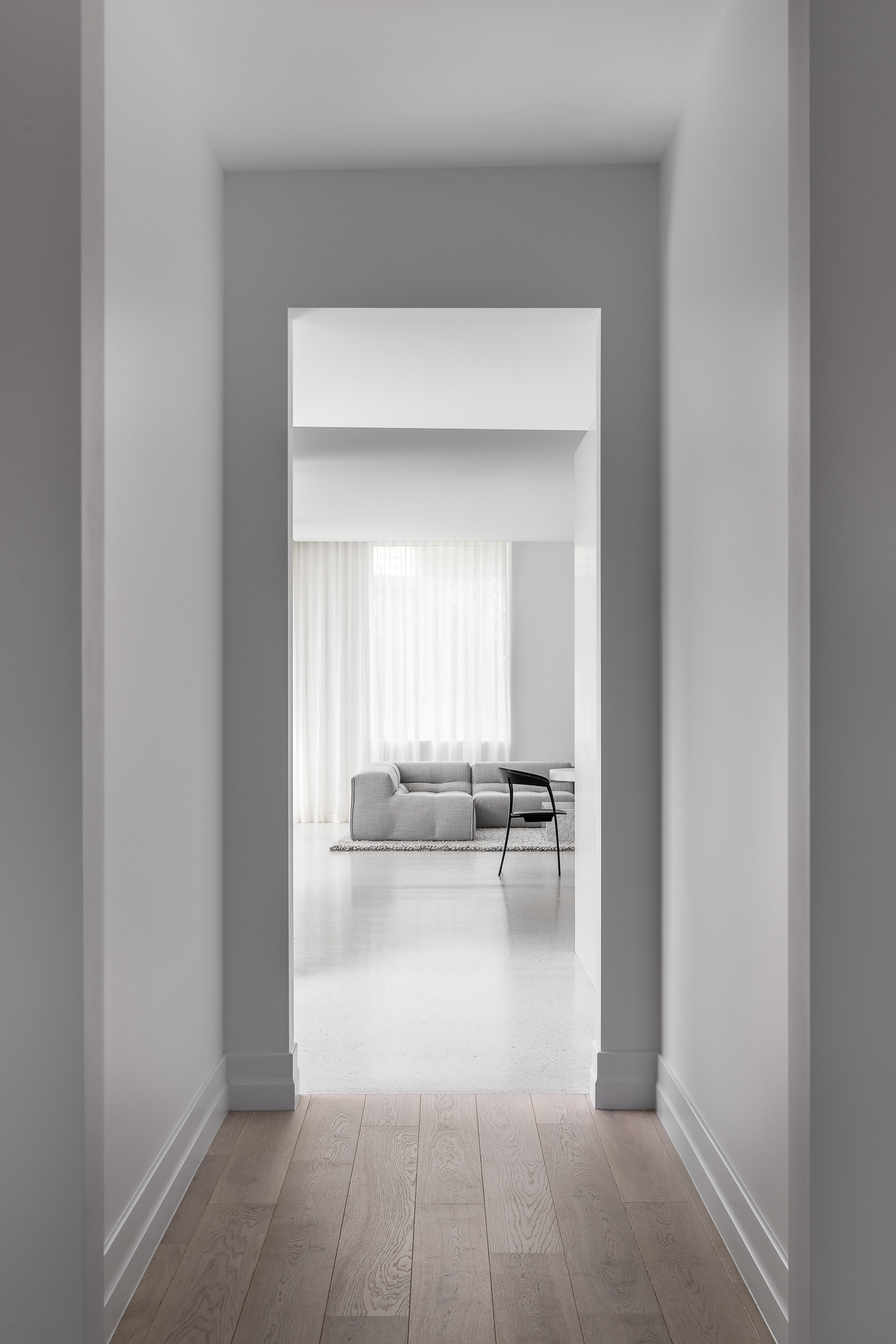Brunswick House is a minimal residence located in Victoria, Australia, designed by Adam Kane Architects. Inspired by subtleties and a muted tonality, Brunswick House is founded on principles of lightness and an engagement with its landscape. Embracing the existing Californian Bungalow previously in place, the proposal expands the envelope of the home, reaching deeper into the site and opening to the north to create a series of meaningful connections between inside and out. A considered approach sees the old flow effortlessly into the new with shared materiality and a matched approach to proportion and scale.
Ensuring the home felt timeless was imperative to its continued relevance, and to allow the residence to endure gracefully over time. In its corner site positioning, the address with the streetscape became an important conversation and needed to reflect both modern and considered sensibilities, while reinforcing the unique identity of the home. The new volumes to the rear speak to a thoughtful restraint and see two rectilinear forms stack on top of one another. On approach, the new volumes slowly pivot away from one another, carving out an organically covered area below as the upper form projects overhead.
At the core of the principles guiding Brunswick House is a dedication to the purity of its parts and the avoidance of ornamentation, and through rigor and refinement, a sense of calm emerges. Home to a growing family, the final resolve reflects the character of its occupants and is intended as a place of quiet, stillness and order. An interplay of whites and greys are elevated through the use of natural stones and their intricate veining, while light-colored wide timber boards add textural depth.
The internal experience is filled with natural light and emphasized by framed openings that encourage the surrounding curated landscape spaces to conjure themselves as living artworks, shifting in color and fullness throughout the year. While offering a place of protection and privacy, Brunswick House is contrastingly light and feels outwardly connected, blurring the thresholds of the building edge.
Photography by Timothy Kaye











